A complete review of the Patek Philippe Nautilus 5990
At Baselworld 2014, Patek Philippe broke the mould somewhat by launching not one but two complicated steel timepieces. By far the biggest head-turner of the two was the Patek Philippe Nautilus 5990. In this review, we will detail why it’s been one of the most sought-after Patek Philipe watches in recent years, and why it continues to command an impressive price-tag.
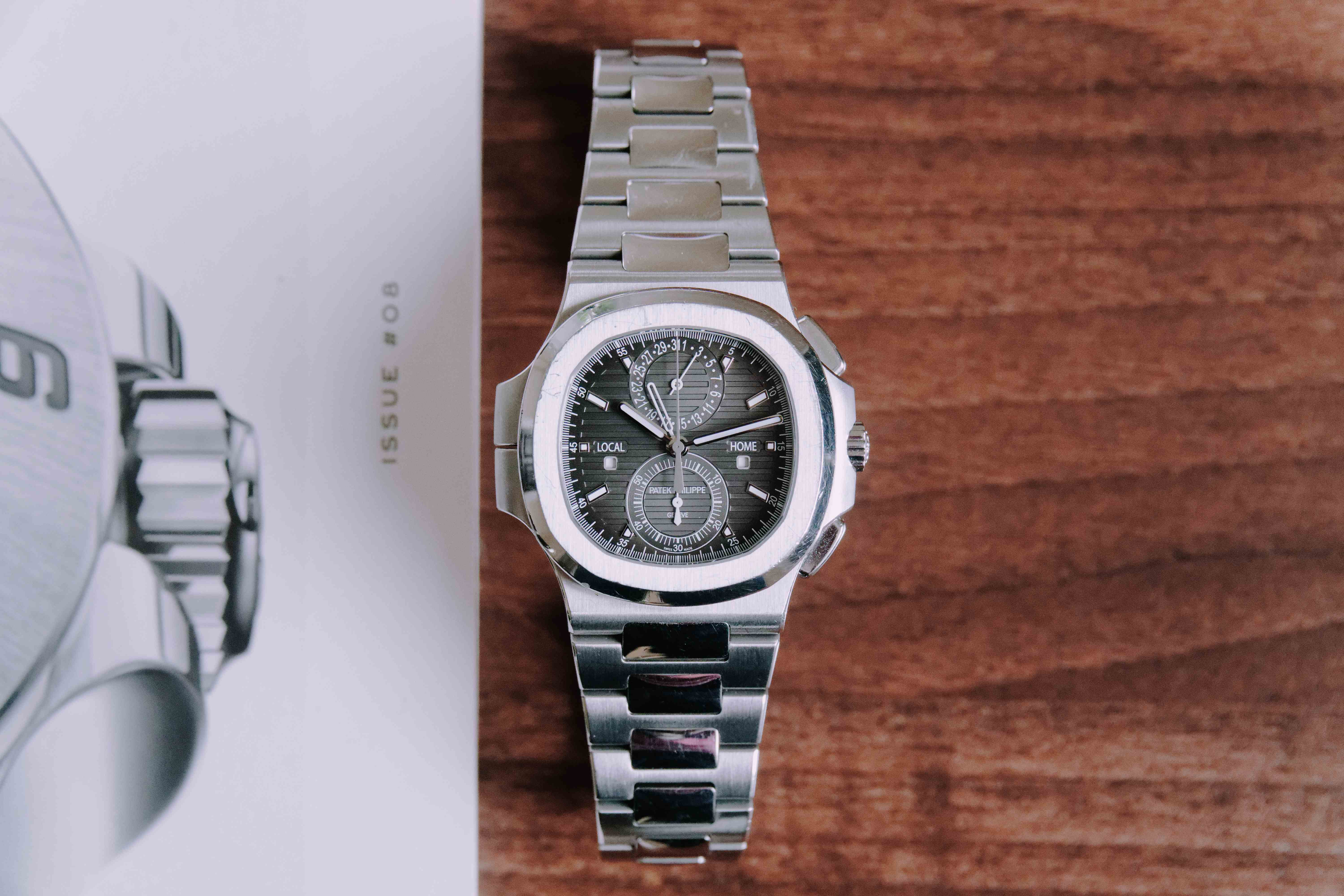
As a successor to the 5980, it should come as no surprise that the Patek Philippe Nautilus 5990 is as impressive as it is durable. Like its predecessor, the 5990 offers chronograph functionality, but with the welcome addition of a double timezone display.
While the Patek Philippe Nautilus 5990 isn’t necessarily the most complex of the Nautilus models (that award goes to the 5740), it’s a close enough second. Crucially, it weighs in at less than half the price of the 5740, which makes it practical, affordable and certainly desirable if you’re in the market to buy a Patek Philippe watch.


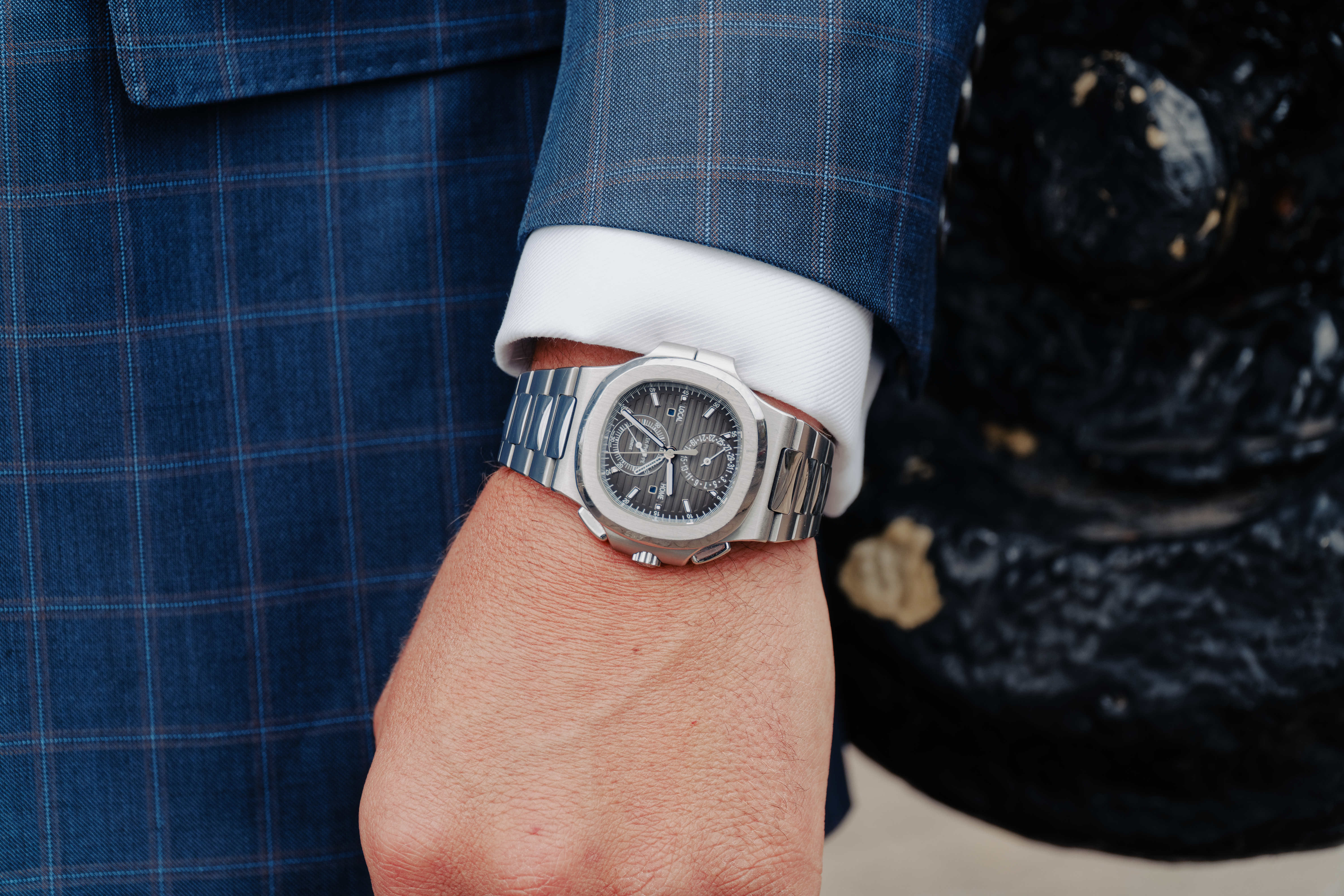
Case and aesthetics
When you first cast eyes over the 5990, you’d be forgiven for thinking that it closely resembles other Nautilus models. However, there are several subtle changes which become apparent upon closer inspection. For example, there’s a steel case which is slightly larger than normal, measuring 40.5mm from 10 o’clock - 4 o’clock. It’s also slightly thicker than previous Nautilus models, measuring in at just over 12.5mm. Despite this increase in size, the Patek Philippe Nautilus 5990 is still incredibly compact for such a complicated timepiece.
It’s worth pointing out that there’s little variation on offer with the 5990 – it’s not available in any other finish apart from steel and is only available with a black gradient dial. It does, of course, feature the embossed Nautilus signature pattern, which Patek Philippe fans will be all too familiar with.

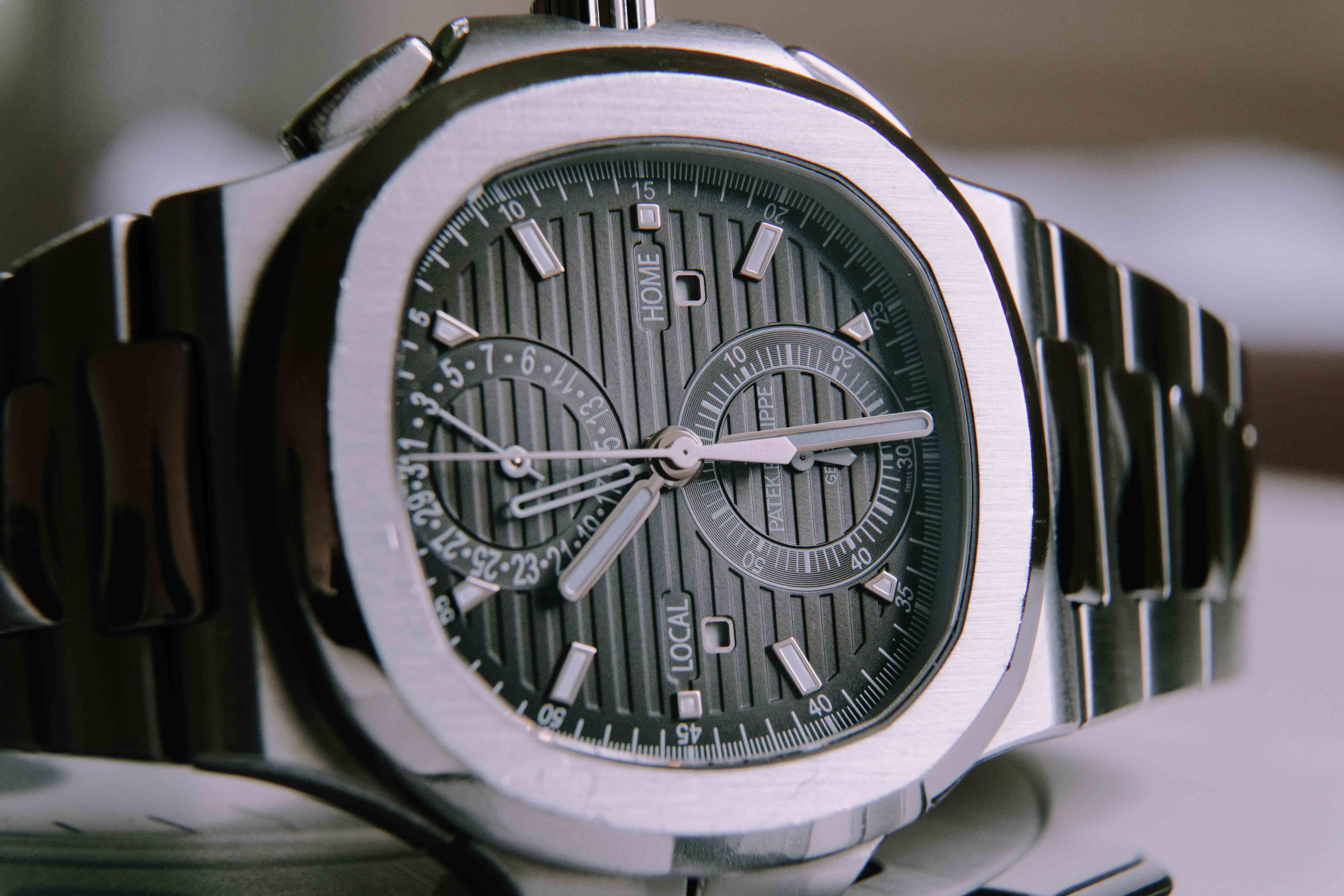

The face features a dual-time display in the centre, with the date situated on a sub-dial positioned at twelve o’clock. The date is set to change per the local time display, to avoid any confusion when making use of the dual time capability. There’s also a series of day and night indicators which sit just below the centre axis – the local day/time indicator sits at 9 o’clock, while the home time indicator sits at 3 o’clock. During the daytime, these appear white, turning blue in the evening.
Hour markers and local hour/minute hands feature a luminescent coating, which again will be familiar to those who’ve owned a Nautilus in the past. At this point, you may be thinking “what’s changed?”, which is where the 60-minute (hourly) chronograph counter comes in.
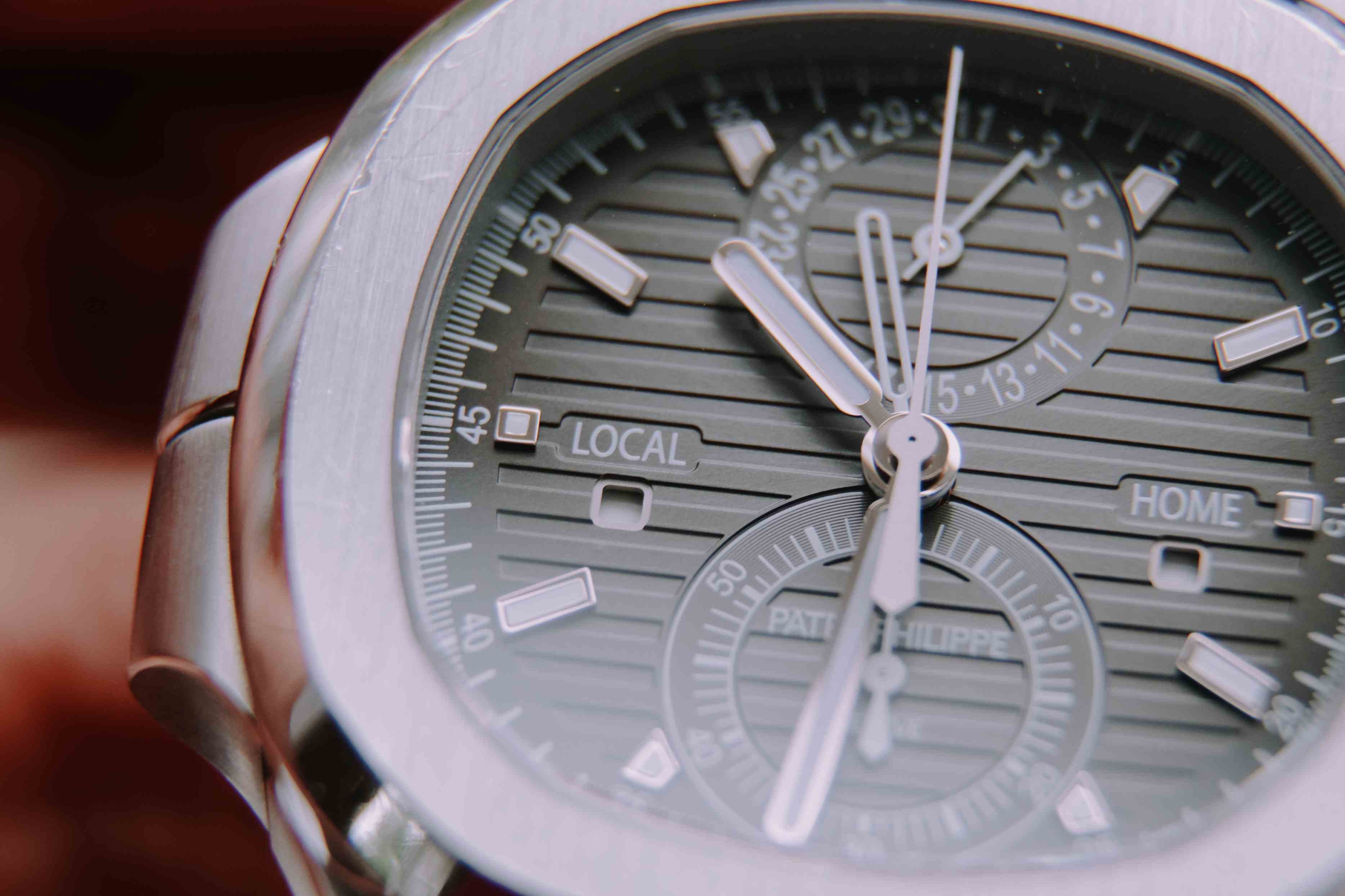
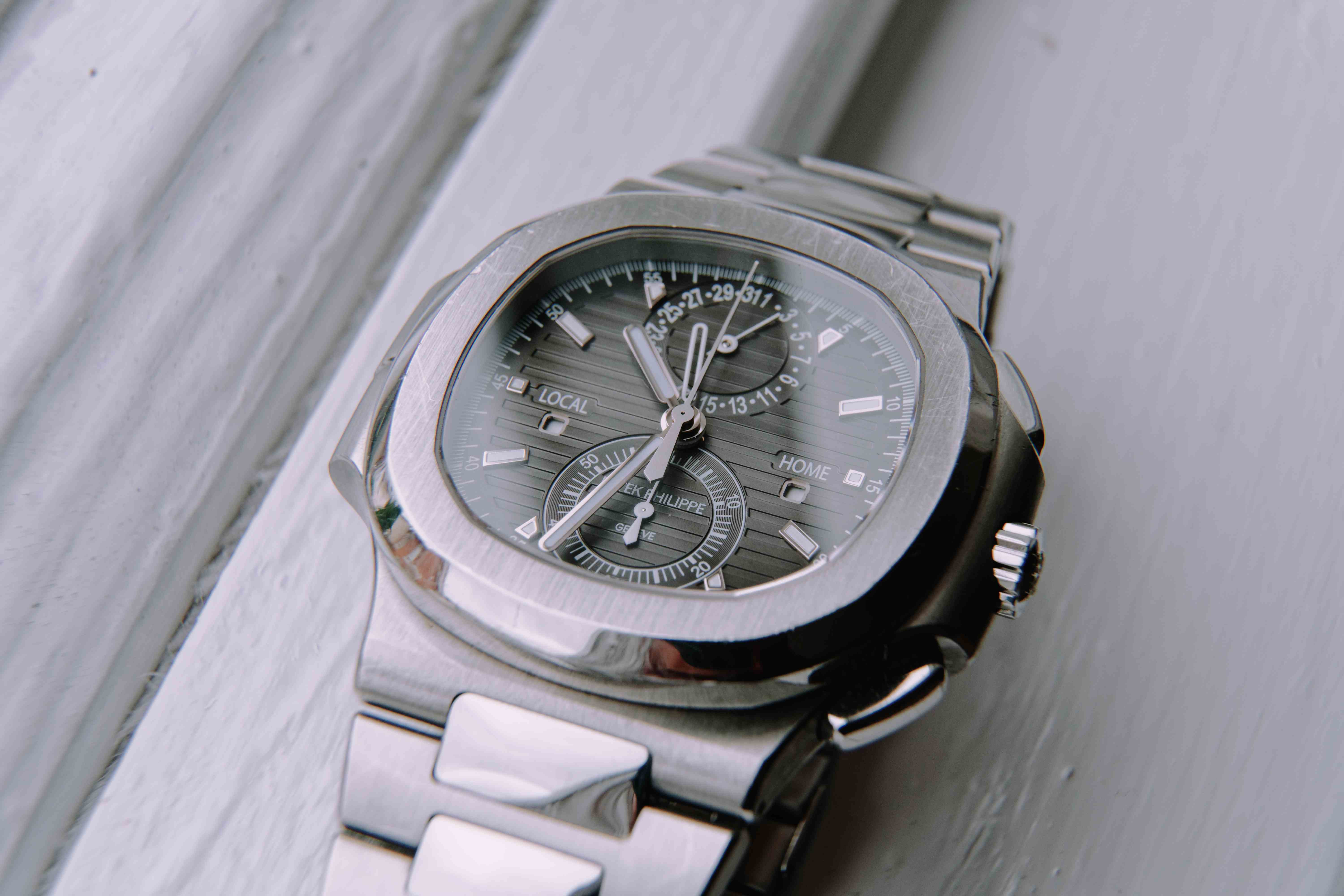
Situated at six o’clock, the Chrono counter is complemented perfectly by a central chronograph second hand. There’s a nice little touch here in the form of a counterweight which is used on each chronograph hand. Both chronograph hands feature the same shape of lancet – this is a nice subtle touch which denotes they belong to the same complication.
The familiar Nautilus bump on the left-hand side of the watch case has been split into two buttons. The travel hand will jump with each press of the button, allowing those on the move to easily set the local time in their current destination. Those who don’t need to track a second time zone can simply hide the travel hand beneath the main hour hand, which helps things from getting too confusing.
The ease-of-use of the Patek Philippe 5990 is certainly what endears it to watch fans. Yes, it’s a complicated piece of engineering; no, it’s not complicated to understand or operate.
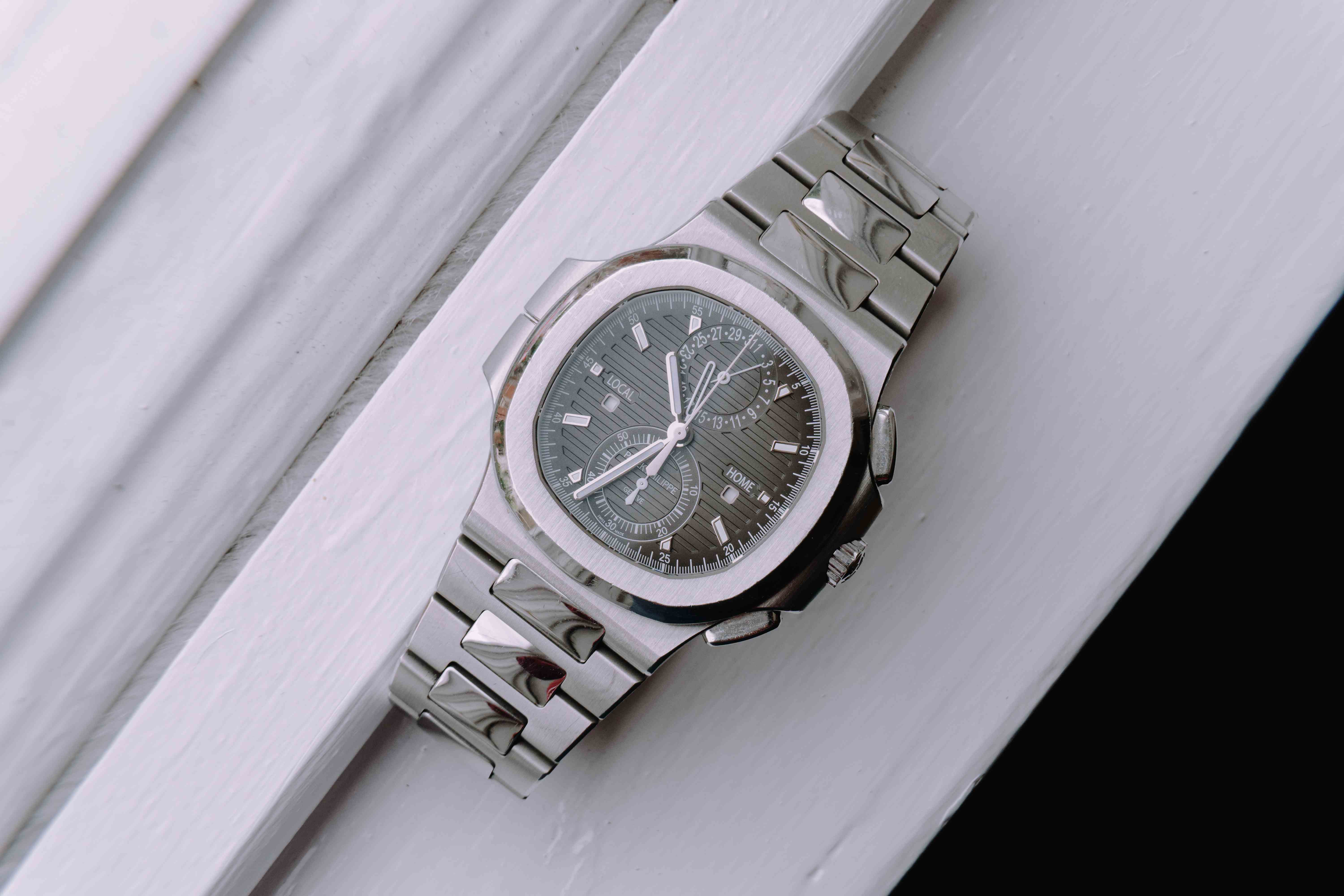
All-new movement
While it’s worth pointing out that none of the complications used here are unique to the Patek Philippe Nautilus 5990, the way they have been combined is a first for the company. To achieve this, Patek Philippe had to develop an all-new movement: say hello to the calibre CH 28-520 C FUS.
The base of the 5990 is essentially unchanged from the previous 5980 model and involves a chronograph mechanism complete with an innovative disk clutch and column wheel design. The dual time zone complication has been borrowed from the 5164A Aquanaut. Ultimately, the 5990 combines sporting complications from two of the most attractive and versatile designs in watchmaking – which is more than enough for most timepiece fans.
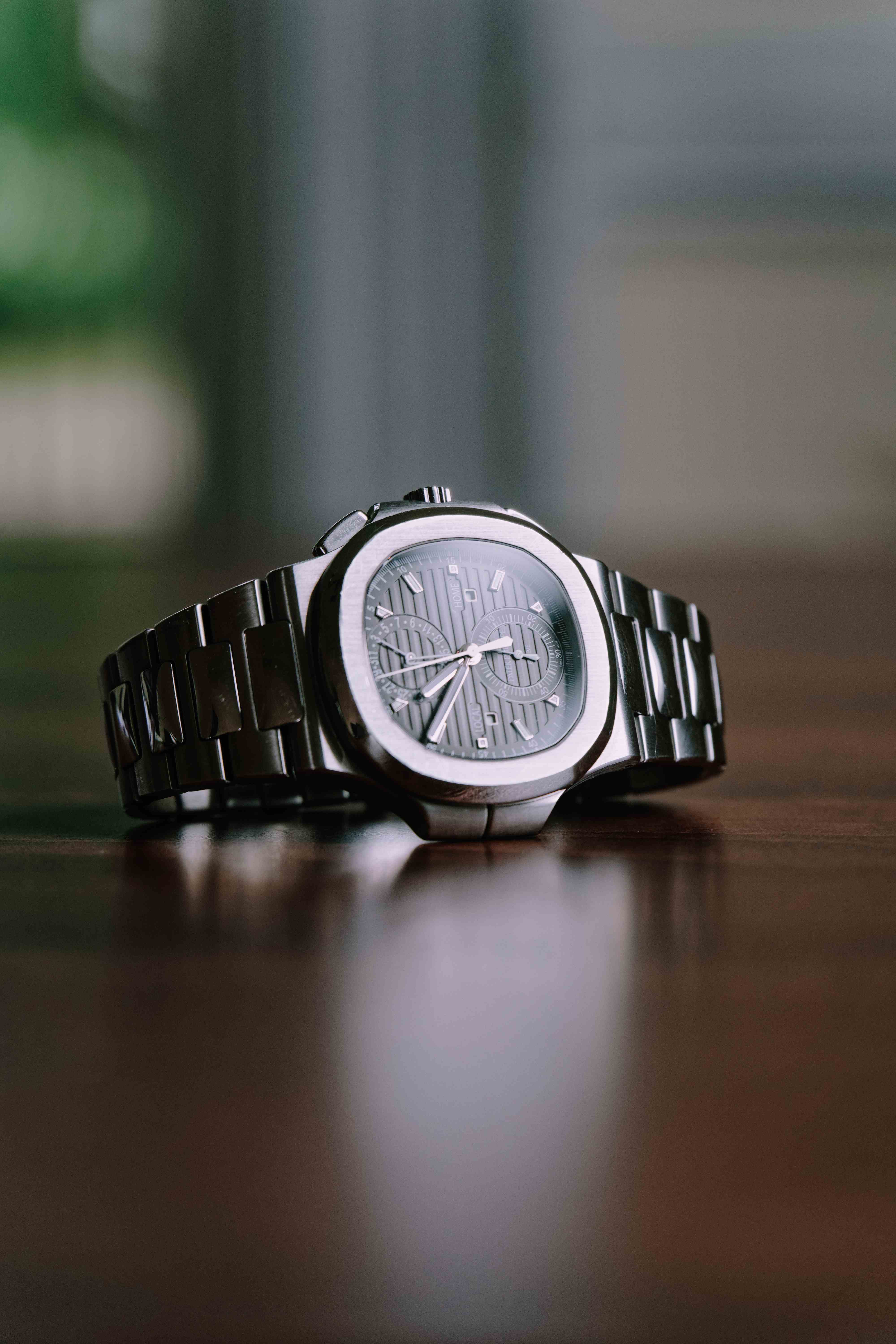
However, Patek Philippe has stepped things up even further by converting the monocounter used in the 5980 to a 60-minute (one hour) counter on the 5990. The position at 6 o’clock remains unchanged, although the date display has been revised. On the 5980, an aperture date sat at 3 o’clock. The 5990 instead features an analogue date display on the sub-dial.
Movement buffs will no doubt be interested in the addition of the “FUS” to the calibre title. This is in reference to the Travel Time mechanism, which allows the wearer to adjust the local hour hand backwards or forwards in one-hour increments. While it might seem like a modern touch, it actually traces back to a patent which was granted to Patek Philippe way back in 1959. Despite the 5990 having a modern feel, it’s nice to still retain a piece of classic Patek Philippe history on your wrist in this way.
Watch enthusiasts might be thinking that this is not the sort of feature which adds any provenance. After all, there are lots of dual-time watches which boast this sort of functionality, so what makes the 5990 so special?
The difference here is that this mechanism is completely isolated from the going train. Ultimately, this means that the amplitude of balance won’t be impacted when you engage the mechanism.

What’s equally impressive is that the incorporation of the Time Travel mechanism required the addition of no less than 47 extra parts – yet the Patek Philippe Nautilus 5990 is just 0.3 thicker than the 5980. This has been achieved by updating the escapement, whereby a larger Breguet overcoiled balanced spring has been replaced with a Patek Philippe Spiromax® hairspring.
Bracelet
The steel bracelet on the Nautilus 5990 is one of the most impressive in the Patek Philippe catalogue. It boasts beautifully finished polished edges, mirror-like centre links and carefully brushed sides. This combination of finishes works impeccably well with the mixed finishes of the case, and nicely completes the steel aesthetic of the 5990.
Even more beautiful is the way the bracelet tapers down to its fold-over clasp. It’s a real joy to admire and offers security and practicality when you’re on the move. While some may prefer the composite straps on Patek Philippe mainstays like the Aquanaut, there’s just something about the craftsmanship of the 5990 steel bracelet and clasp that exudes luxury.
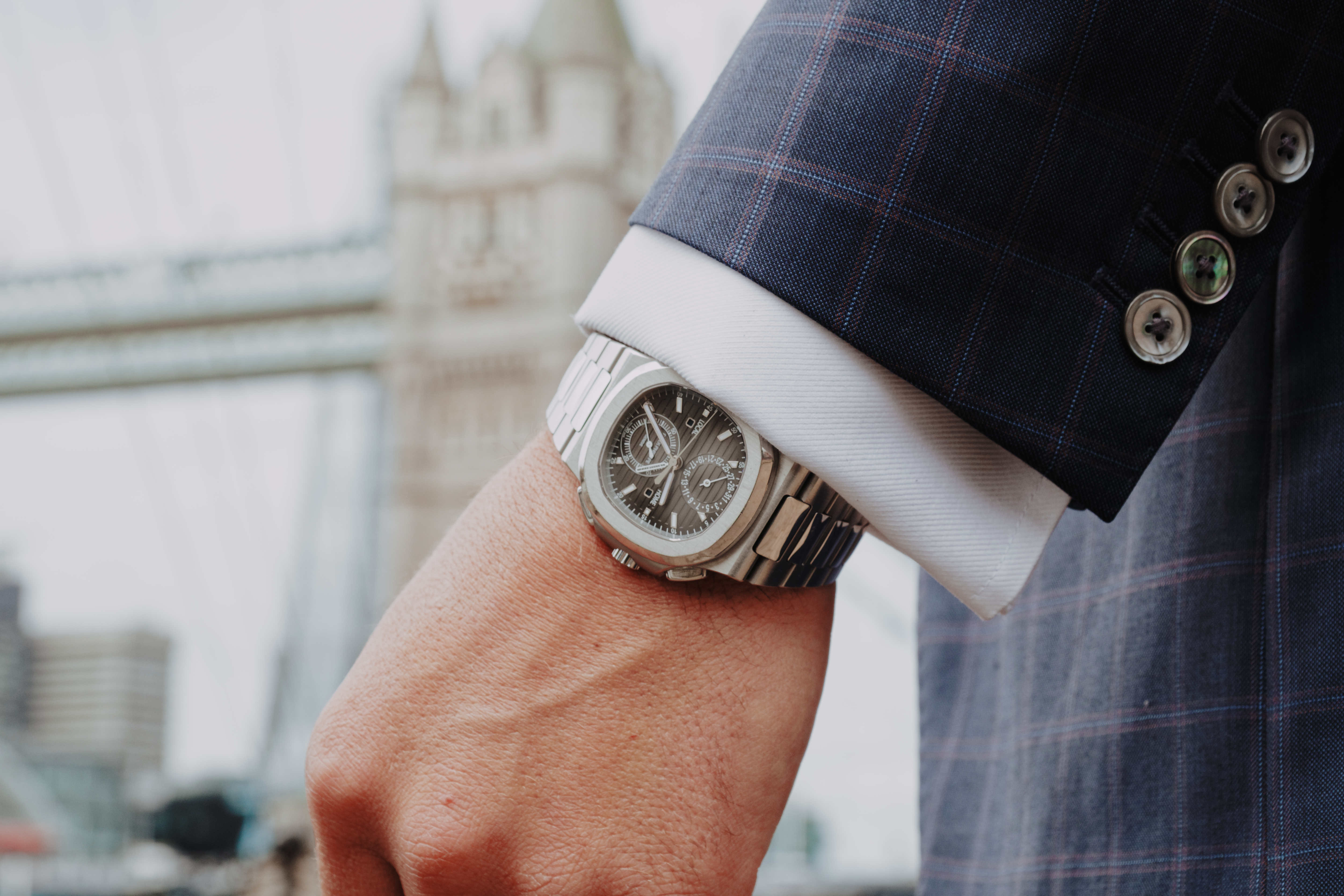
Automatically wound
The Patek Philippe Nautilus 5990 is wound automatically via a rather heavy central rotor which is finished in 21K gold. This rotor beats at a steady 28,800vph and has a power reserve of 55 hours.
As is par for the course, the movement bears the renowned Patek Philippe seal. It has been lovingly finished with Geneva striping along the chamfered bridges, in addition to Geneva circular graining which adorns the rotor. These details are easily visible via the sapphire-crystal back case.

Pricing
The Patek Philippe Nautilus 5990 entered the market in 2014 at £40,800. As a steel Nautilus, you won’t find a brand new 5990 via an authorised channel – regardless of how hard you try. As a result, the 5990 can be a difficult model to track down, with prices on the secondary market starting at around £80,000.
While this might not be what you wanted to hear if you’re looking to purchase a 5990, it’s almost certainly great news for those looking to sell a Patek Philippe watch – particularly if you’ve got a steel Nautilus model.

A fantastic all-rounder
Each of the above elements combines to create what must be one of the most appealing Patek Philippe’s in recent years. It’s incredibly comfortable to wear and lends itself to all styles and occasions.
When you close the clasp and adorn your wrist with the Patek Philippe 5990, you’ll notice a distinct presence – and so will your peers. The 5990 has already proven to be such a huge success that it has already ended the production run of its predecessor, and it’s easy to see why: it’s practical, versatile and comes with a relatively low price tag for a Nautilus.
In years to come, mark our words: this watch will make it onto the “must-have list” for timepiece enthusiasts around the world – and perhaps the time to act is now. The Patek Philippe Nautilus 5990 is in limited supply, despite having mass-market appeal, which means demand is currently at an all-time high.

Technical specifications:
Case:
- Steel case with screw-down crown (40.5mm x 12.53mm)
- Sapphire-crystal case back
- Water-resistant up to 120 metres
Dial:
- Black brass dial with bright-dark gradation and horizontal embossed pattern
- Hour/minute hands featuring a luminescent coating
- Dual time display complete with independent night/day indicators
- Analogue date set to local time
- Second hand on centre chronograph
- 60-minute (hourly) chronograph counter
- Gold hour markers complete with a luminescent finish
Movement:
- Self-winding
- CH 28-520 FUS calibre
- Gyromax balance
- Spiromax balance spring
- Off-centre mini rotor finished manufactured from 21K gold
- 55-hour power reserve
- Patek Philippe seal
Buy Or Sell A Luxury Watch The Smart Way With Chrono Hunter
If you are considering your new purchase or perhaps the sale of a beloved timepiece, Chrono Hunter is the smart way to buy or sell a luxury watch.
Compare Offers from the worlds most reputable luxury watch retailers.
Save Time.
Save Money.
Personalised Service.
Hassle-Free.

.png)